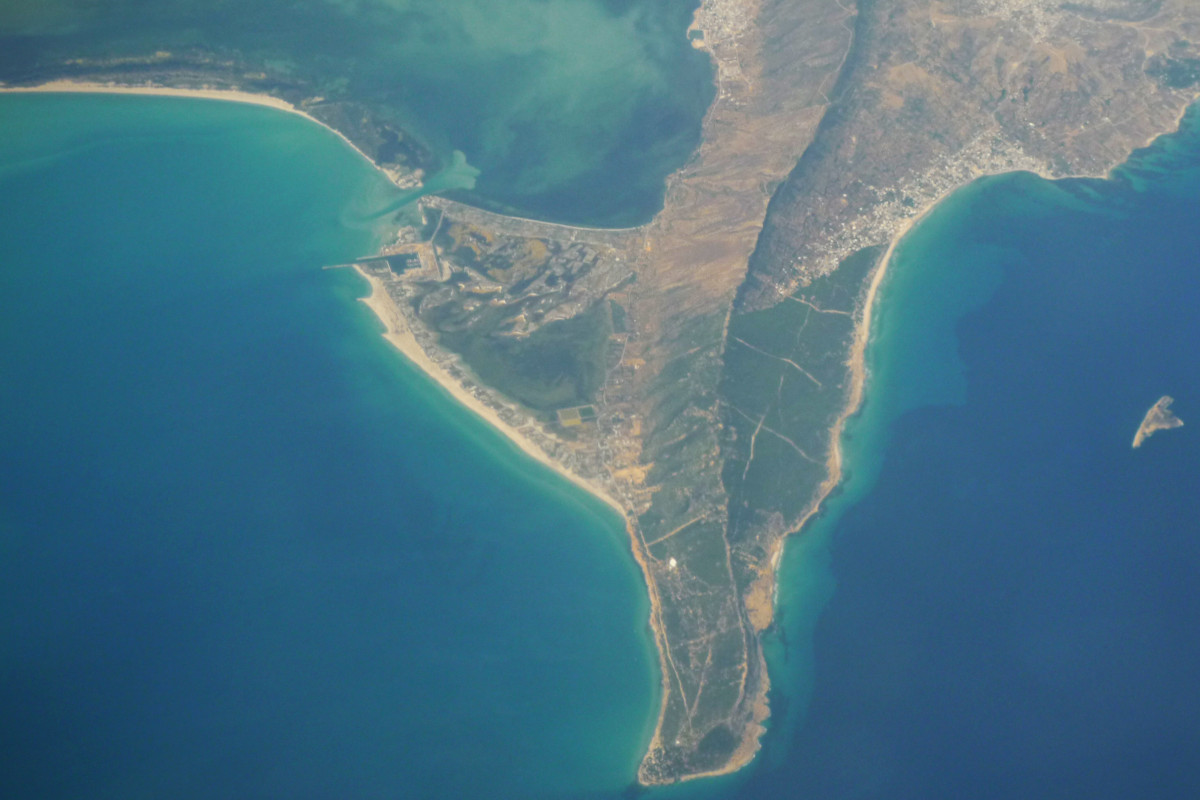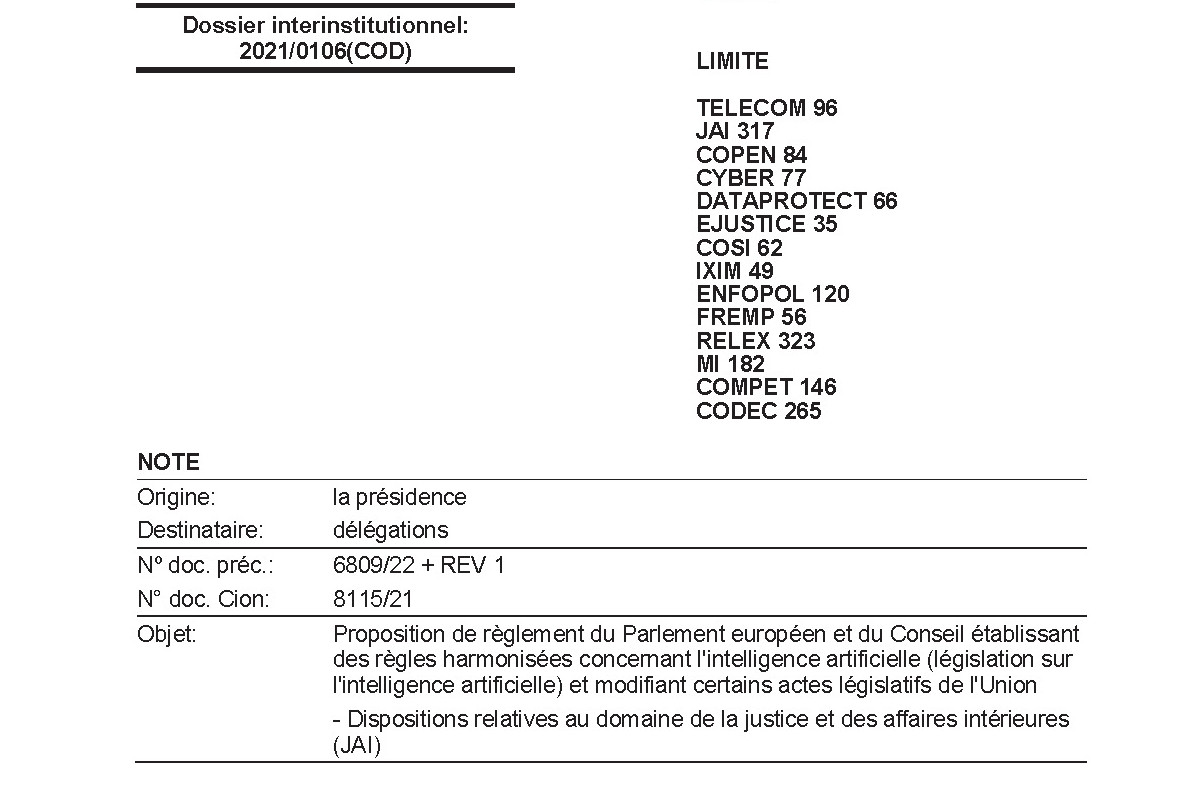EU: Tracking the Pact: Tunisia refuses cooperation with Frontex but will set up an "integrated border surveillance" system
Topic
Country/Region
05 April 2022
A revised version of the EU's plan for migration cooperation with Tunisia contains a number of updates to the previous versions. It is clear that the North African country, which is in the midst of a wave of protests and a democratic crisis, continues to refuse to cooperate with Frontex - but the provision of millions of euros for an "integrated border surveillance and coastal communication system" is still going ahead. More money is also being provided, with the aim of targeting "young Tunisians prone to migration”.
Support our work: become a Friend of Statewatch from as little as £1/€1 per month.

A leaked copy of a Commission draft action plan on Tunisia concerned with the "operationalisation" of the Pact on Migration and Asylum is an updated version of one circulated in October last year. The proposed 2021-2027 EU-Tunisia strategic priorities have been updated between the two versions of the document, though are yet to be agreed. The EU is still seeking to relaunch negotiations on readmission and visa facilitation agreements.
While making the same comments about political instability and delays to political reforms, due to the pandemic as well as Tunisian president Saïed’s freezing of parliament in July 2021, the updated action plan refers to a 2022 timeline announced by president Saïed. This includes a public consultation running up to March, a referendum on constitutional reform in July, and parliamentary elections in December. This engagement seems unlikely to appease months of rallies against the monopolisation of power since July last year, amid economic crisis, unemployment, food shortages and financial stresses.
Tunisia continues to reject cooperation with Frontex, though it is a priority country for CEPOL and Europol, and the EU Asylum Agency (EUAA) is “working to establish contacts with the Tunisian administration”. Working arrangements with CEPOL and Europol are still to be signed or under negotiation, though the October document expected signatures at the end of 2021. The 2022 plan notes that Frontex’s EU4BorderSecurity project included Tunisia as a beneficiary country, though, as noted in the 2021 action plan, no direct border related activities have been carried out in Tunisia “due to Tunisian authorities’ reluctance to cooperate with Frontex”.
Up to €85 million is intended for Tunisia “for 2021 and 2022”, to cover border management (€25m), migration governance (€6-10m), and voluntary returns to and from Tunisia (€5m), and multi-country actions on legal migration (€20-25m), and the fight against migrant smuggling (€12-20m). The role of local actors and municipalities in responding to needs and challenges relating to asylum is added in the first annex to the February document, noting the support by several projects including City 2 City, ProGreS 4.
Emergency Trust Fund
Between the two versions of the action plan, the total amount of funding for activities in Tunisia increased from €92 million to €93.5 million in migration related programmes under the Emergency Trust Fund for Africa (EUTF). The particular aims are expanded to include enabling diaspora investment in the country, and specifying that the support for “young Tunisians prone to migration” will take the form of socio-economic opportunities. The annex to February’s document adds that the EUTF supports diaspora investment and skills transfer, noting projects Diaspora 4 Development (€4m), due to begin a second phase in 2022, and MEET Africa. An extra €3.9m was contracted at the end of 2021 (following €2.5m of support) under the EUTF to support socio-economic reintegration of returnees via Tunisian-led reintegration programme Tounesna.
Future funding under the 2021-27 Multi-annual Financial Framework (MFF) will focus on a closer relationship with Tunisia, an open, sustainable, inclusive and innovative economy. Both documents consider focus on legal migration and addressing irregular migration under the “closer relationship between Tunisia and the EU”, but the later document expands on this, citing mobilisation of the diaspora, protection and reintegration. Addressing the root causes of migration also gains further detail, with support to access quality education and training, creation of sustainable economic opportunities, support for SMEs and supporting climate change adaptation all mentioned.
For all the talk of prioritising legal migration, differences between the annexes show that issuance of first time residence permits by EU states for Tunisians has fallen from 30,831 in 2019 to 23,292 in 2021 (there is no data available for 2020), although the pandemic presumably is one factor behind the fall. The data on total valid residence permits is not updated between the two documents.
The 2022 action plan adds that Tunisia is a key country on the central Mediterranean route, as a country of origin, transit, and destination for migrants. The new action plan pledges to “support and accompany Tunisia in addressing all of its complex mixed migration challenges”, including the prevention of irregular departures from Tunisia, and managing more migrant and asylum seekers in the state. There are no updates between the two documents to data on visas or asylum in Tunisia and hosting forcibly displaced people.
A subcommittee on migration and social affairs, to discuss cooperation on related issues and explore future perspectives, initially foreseen for the end of 2021, is now loosely scheduled for the first half of 2022, depending on Tunisian availability. The same holds for an Association Committee senior discussion on current areas of joint work, and the Association Council.
We need your support to keep monitoring and exposing the externalisation of European borders
Become a Friend of Statewatch today!
Root causes
Regarding root causes of irregular migration, the documents are broadly consistent, with the February version adding more detail on programmes to “improve young people’s prospects and employability, thus reducing migratory pressure”. These include Erasmus+, INNOV’I, ELIF, EU4Youth and Creative Europe, alongside “other sectoral programmes”.
Intentions to “mobilise” Tunisians abroad have also been finessed between the two documents, with February’s copy discussing support for Tunisian investments and skills, which in both versions goes hand in hand with “supporting the sustainable reintegration of Tunisian returnees” including through Tunisia’s Tounesna reintegration system.
The February action plan adds that Tunisian citizens made up about 25% of irregular arrivals to Italy in 2021, constituting the highest number of any nationality. The EU will “support Tunisian efforts to prevent irregular departures… conduct rescue operations, as well as build up its reception capacity”. UNHCR reports that 1,300 people drowned or were lost at sea in the central Mediterranean in 2021, with the IOM reporting the total figure of people who have died or disappeared on this route since 2014 at 18,000. In February, refugees and asylum seekers demonstrated in front of UNHCR’s offices in Zarziz and Medenine over increasing expulsions from accommodation centres.
2021 figures for “illegal border crossing of Tunisian nationals to the EU” by the central Mediterranean route are updated in February’s document, from 12,835 (as of September 2021) to 15,671 by the end of the year. The number of arrivals registered to Italy increased from 16,658 to 20,218. The numbers for "illegal" stays in the EU remained the same from September to the end of 2021.
Numbers of people returned seem to be measured a little later in the year, not featuring for 2021 in the October plan, and cited at 8,005 as of the end of September in the February 2022 version. This meant an increase of return rate from 13% to 14% between 2020 and 2021.
Romania remains one of the highest “successfully” returning countries, increasing its rate of return from 67% to 100% (a figure shared with Bulgaria) in 2021, while Greece’s return rate grew from 27% to 50%. States with the lowest return rate also saw a slight increase.
First time asylum applications by Tunisian nationals more than doubled from 2,690 in 2020 to 6,075 as of September 2021. First instance asylum decisions seem to be falling year by year, from 2,910 in 2019, to 2,470 in 2020, and 2,150 as of end of September 2021. The EU recognition rate excluding humanitarian protection has, however, risen, from 3.8% (2019) to 4.7% (2020) to 9% in 2022.
Multi-Country Migration Programme
The February Action Plan includes new subsections on the Multi-Country Migration Programme, under which actions for “EU support for Border Management Institution in Libya and Tunisia”, “Supporting sustainable Protection, Return and Reintegration in North Africa”, and “Towards a Holistic Approach to Labour Migration Governance and Labour Mobility in North Africa (THAMM III)” were adopted. The first includes “the completion of an integrated coastal surveillance system”.
The Multi-Country Migration Programme for the Southern Neighbourhood is addressed more specifically in the February document, underlining that Tunisia will benefit under priority areas (including funding for protection for those in need, border management, readmission, return and reintegration, and legal pathways), specifically through the expansion of available labour migration schemes, and “to support better management and further consolidate efforts in the area of reintegration”.
The 2022 document extends the implementation of the Tunisian component of the Border Management Programme (BMP) Maghreb (funded with €30 million from the EU Trust Fund for Africa) by International Centre for Migration Policy Development (ICMPD) from 2018-22 to 2023. A €10 million top up was being finalised, according to the 2021 action plan, but this is not mentioned in February’s version.
The Asylum, Migration and Integration Fund (AMIF), Border Management and Visa Instrument (BMVI), and Internal Security Fund (ISF) can, “under strict conditions”, provide complementary funding opportunities for the external dimension of migration. The AMIF Thematic Facility Work Programme was adopted in November, after the October action plan was circulated. The Commission intends to continue the Regional Development and Protection Programme in North Africa under this programme. The February document offers more detail on next steps for funding measures, following dialogues and procedures regarding NDICI in October and November, and the adoption of the 2021-2027 Mutliannual Indicative Programmes in December 2021.
Content on the "Team Europe Initiative" (TEI) on the Central Mediterranean migration route, proposed by France and Italy, remains largely the same between the two documents, with the latter specifying that the TEI will include actions funded and managed through the Neighbourhood, Development and International Cooperation Instrument (NDICI) fund as national resources of member states. Agreement to proceed with the design and implementation of the TEI was completed on a meeting between member states' development agencies on 4 October 2021. The Commission now plans to share an overview of indicative financial contributions received and a proposal for a governance structure and Joint Intervention Logic to states by March this year.
Find the rest of our 'Tracking the Pact' series in the Statewatch Database
Documentation
- NOTE from: Commission Services to: Delegations: Operationalization of the Pact – Action plans for strengthening comprehensive migration partnerships with priority countries of origin and transit Draft Action Plan: Tunisia (Council doc. 11392/2/21 REV 2, LIMITE, 3 February 2022, pdf)
- NOTE from: Commission Services to: Delegations: Operationalization of the Pact – Action plans for strengthening comprehensive migration partnerships with priority countries of origin and transit Draft Action Plan: Tunisia (Council doc. 11392/1/21 REV 1, LIMITE, 8 October 2021, link to pdf)
Further reading
- 25 March: EU: Tracking the Pact: Externalisation and “Team Europe” at the heart of the “gradual approach”
- 10 March: Frontex to boost border control efforts in Niger, Algeria and Libya
- 9 March: Tracking the Pact: EU eyes future Frontex deployments in Morocco
Image: nene9, CC BY-NC-ND 2.0
Our work is only possible with your support.
Become a Friend of Statewatch from as little as £1/€1 per month.
Spotted an error? If you've spotted a problem with this page, just click once to let us know.
